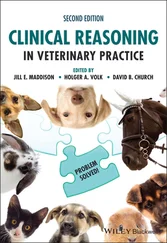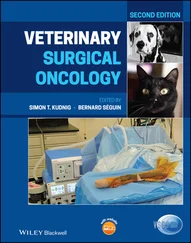Clive Elwood - Leadership in Veterinary Medicine
Здесь есть возможность читать онлайн «Clive Elwood - Leadership in Veterinary Medicine» — ознакомительный отрывок электронной книги совершенно бесплатно, а после прочтения отрывка купить полную версию. В некоторых случаях можно слушать аудио, скачать через торрент в формате fb2 и присутствует краткое содержание. Жанр: unrecognised, на английском языке. Описание произведения, (предисловие) а так же отзывы посетителей доступны на портале библиотеки ЛибКат.
- Название:Leadership in Veterinary Medicine
- Автор:
- Жанр:
- Год:неизвестен
- ISBN:нет данных
- Рейтинг книги:4 / 5. Голосов: 1
-
Избранное:Добавить в избранное
- Отзывы:
-
Ваша оценка:
- 80
- 1
- 2
- 3
- 4
- 5
Leadership in Veterinary Medicine: краткое содержание, описание и аннотация
Предлагаем к чтению аннотацию, описание, краткое содержание или предисловие (зависит от того, что написал сам автор книги «Leadership in Veterinary Medicine»). Если вы не нашли необходимую информацию о книге — напишите в комментариях, мы постараемся отыскать её.
Leadership in Veterinary Medicine
Leadership in Veterinary Medicine
Leadership in Veterinary Medicine — читать онлайн ознакомительный отрывок
Ниже представлен текст книги, разбитый по страницам. Система сохранения места последней прочитанной страницы, позволяет с удобством читать онлайн бесплатно книгу «Leadership in Veterinary Medicine», без необходимости каждый раз заново искать на чём Вы остановились. Поставьте закладку, и сможете в любой момент перейти на страницу, на которой закончили чтение.
Интервал:
Закладка:
Veterinary professionals rarely work in isolation. In most arenas, they are working with colleagues, veterinary and non‐veterinary, without whom they could not exercise their obligations. These teams may have many different shapes and sizes, ranging from the small practice with two or three veterinary surgeons, some veterinary nurses and administration staff to the farm animal practitioner who is no longer the ‘cow doctor’ of old but is now a data scientist working in a team with farmers, animal health advisers and technicians. Or from the specialist surgeon in referral practice working in a multidisciplinary team with anaesthetists, specialist nurses, diagnostic imagers, medicine specialists, the client and the primary care veterinary surgeon, etc. to the technical adviser in a pharmaceutical company working with marketing, sales, vets in practice and research scientists. In all of these scenarios effective teamwork and leadership can make a difference to team members and the wider stakeholders and, within this, the veterinary professional has to take responsibility for, and negotiate, their professional obligations and the primacy of animal welfare, whether or not they are not the only person in a leadership role. Within the constraints of professional obligation and depending on the task in hand, it may be entirely appropriate that a someone other than a veterinary professional takes leadership responsibility.
The farmhouse kitchen was an unconventional space for a high‐stakes team meeting, but it was a rare opportunity to get together face to face and discuss the farm's productivity and how to best manage some of the challenging issues. Frank looked around the room and was pleased to see everyone was ready; Jane the farm manager, Peter the nutritional consultant, Jo the herdsman, Sue the AI technician (and Bess the obligatory border collie under the table). ‘Right’, he said, taking a last bite of cake and mouthful of tea (some parts of farm practice remain as good as ever), ‘Let's get started’.
The concept of veterinary teams has gained formal prominence in recent years as the profession adapts to rapid changes in the economic, social, and regulatory landscape. These include:
An expansion in the range of allied professionals and members of the team operating within this environment
A change in the expectations of pet owners, farmers, industry, government, and other clients
Concerns about the capacity of the veterinary workforce (British Veterinary Association 2019)
Increasing team size and leverage of veterinary professional skills in clinical practice, through use of suitably qualified, trained, and skilled non‐veterinary staff as a result of business remodelling
Within this context it is notable that, in the 2019 RCVS Survey of the professions, respondents did not have a high opinion of the profession's development of leadership skills, with over half (52%) disagreeing or strongly disagreeing that the profession pays sufficient attention to this area of professional practice (Robinson et al. 2019a).
2.10 What Difference Does Leadership Make?
How do we know leadership makes a performance difference? Intuitively, of course, we know there is a difference between good leadership and bad, and that leadership matters (Hogan et al. 1994). Assessment of whether or not leadership is effective will depend on criteria you are assessing; excellent financial performance might be seen but at the expense, for example, of a significant negative impact elsewhere (Hiller et al. 2011).
The importance of leadership in the medical professions, from which we can extrapolate, is summed up as follows:
Leadership is the most influential factor in shaping organisational culture, so ensuring the necessary leadership behaviours, strategies, and qualities are developed is fundamental. There is clear evidence of the link between leadership and a range of important outcomes within health services, including patient satisfaction, patient mortality, organisational financial performance, staff well‐being, engagement, turnover and absenteeism, and overall quality of care (West et al. 2015).
When defining and defending the significance of ‘good enough’ leadership I find it helpful to turn the question around and look at the impact of bad leadership. The lessons of patient safety failings in human medicine, e.g. the Mid‐Staffordshire NHS Foundation Trust scandal in the UK, where horrifying failings of patient care have been documented, e.g. in obstetric services, and the contributions of bad leadership to real human suffering, should be more than sufficient evidence that leadership matters (Francis 2013). Even on a much smaller scale, in veterinary medicine, the significance of poor teamwork, and by implication leadership, on clinical error has been shown (Kinnison et al. 2015).
Veterinary professionals are often employed for their skills, as well as their professional status. With the associated responsibility comes authority which, allied with ‘good enough’ leadership, can be used for good. There are a number of areas relevant to veterinary medicine where leadership, as a function, has been shown to be important. These include:
Well‐being measures, where leadership can have positive and negative effects (Arnold et al. 2007; Perrewe et al. 2016)
Animal welfare (Higgins and Nicholas 2008; Sfantou et al. 2017; Sinclair and Phillips 2018)
Public and society (Wagner and Brown 2002)
Animal health and disease control (Broekema et al. 2017)
Profitability (albeit a limited, single dimension measurement) (Waldman et al. 2001)
Research capital (McCormack et al. 2014)
Higher education (Bryman 2007)
Conservation (Englefield et al. 2019)
Business (Bloom et al. 2012)
2.11 The Discipline of ‘Leadership’ in Veterinary Medicine
Leadership as a specific nontechnical discipline within veterinary training and professional development has a somewhat patchy coverage. There are a number of individuals who have gained specific training, e.g. in the context of a Master's in Business Administration, or as part of professional development in a higher education setting, as well as increasing numbers of training courses which may be short, and classroom based (often focussed on a particular sector or need) or longer and demanding experiential learning and reflective practice. The online Edward Jenner Veterinary Leadership Program developed by the RCVS in association with the NHS is one such example of the latter. In the US, the Veterinary Leadership Initiative provides a specific focus on leadership development (Crowley et al. 2019). Other US‐based initiatives have included leadership as an important development area for in higher education leadership roles (Lloyd et al. 2005, 2007, 2008). The Vet Futures initiative from the RCVS included ‘Exceptional Leadership’ as one of six areas of focus, and included in this identification, encouragement (including from diverse backgrounds), development, role‐signposting, mentoring, and life‐long learning of/for leaders and leadership. Further to this, the RCVS Leadership Initiative three‐year plan laid out specific projects designed to promote leadership development for all, ensure the RCVS is an exemplar of leadership and is fit to lead the profession and to highlight the range of leadership development opportunities for veterinary surgeons and nurses. As the 2019 Survey of the Veterinary Professions shows, there is much ground to cover (Robinson et al. 2019b).
There are a number of publications with a focus on veterinary business management where leadership is discussed as part of the necessary skill set. Klingborg et al. (2006) review leadership in the veterinary context and examine how leadership might be developed. Also from the USA come perspectives on, and studies of, outcomes of leadership development programs (Crowley et al. 2019). In their study of in‐practice leadership Pearson et al. (2018) recorded and interpreted the narratives of veterinary surgeons who had moved into practice leadership positions and suggest that this transition is a struggle that improves with time. Tindell et al. (2020) used analysis of semi‐structured interviews to examine enablers and motivations of women in veterinary leadership and concluded that participants wanted to influence change for themselves, including work‐life balance and developing their role, and for others through a position of influence. They wanted to inspire and mentor the future generation of leaders. External enablers allowed this transition to occur, including formal mentors and informal support systems, opportunities for growth and increased responsibility, and leadership training (Tindell et al. 2020).
Читать дальшеИнтервал:
Закладка:
Похожие книги на «Leadership in Veterinary Medicine»
Представляем Вашему вниманию похожие книги на «Leadership in Veterinary Medicine» списком для выбора. Мы отобрали схожую по названию и смыслу литературу в надежде предоставить читателям больше вариантов отыскать новые, интересные, ещё непрочитанные произведения.
Обсуждение, отзывы о книге «Leadership in Veterinary Medicine» и просто собственные мнения читателей. Оставьте ваши комментарии, напишите, что Вы думаете о произведении, его смысле или главных героях. Укажите что конкретно понравилось, а что нет, и почему Вы так считаете.












